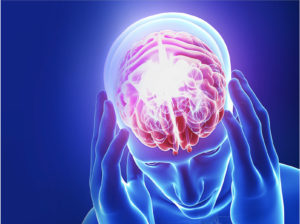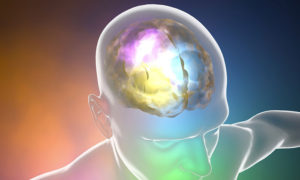Cerebral Palsy (CP) Specimens
Bay Biosciences provides high quality, clinical grade bio-samples, cryogenically preserved biopsy FFPE tissue blocks with matched sera (serum), plasma and peripheral blood mononuclear cells (PBMC) biofluid specimens from patients diagnosed with Cerebral Palsy (CP) disease.
The sera (serum), plasma and PBMC biofluid samples are processed from patient’s peripheral whole-blood using customized collection and processing protocols. The Cerebral Palsy (CP) bio-specimens are collected from unique patients diagnosed with Cerebral Palsy (CP) disease and are provided to a valued pharmaceutical customer for research, development and drug discovery.

Cerebral Palsy (CP) Disease Overview
Cerebral Palsy (CP) is a group of disorders that affect balance, movement, muscle tone and posture. “Cerebral” means the disorder is related to the brain, and “palsy” refers to weakness or a muscle problem. It is caused by damage that occurs to the immature brain as it develops, most often before birth.
Signs and symptoms appear during infancy or preschool years. In general, Cerebral Palsy (CP) causes impaired movement associated with abnormal reflexes, floppiness or rigidity of the limbs and trunk, abnormal posture, involuntary movements, unsteady walking, or some combination of these. Patients with Cerebral Palsy (CP) can have problems swallowing and commonly have eye muscle imbalance, in which the eyes don’t focus on the same object. They also might have reduced range of motion at various joints of their bodies due to muscle stiffness. Cerebral Palsy’s effect on function varies greatly. Some affected people can walk; others need assistance. Some people show normal or near-normal intellect, but others have intellectual disabilities. Epilepsy, blindness or deafness also might be present.
Cerebral Palsy (CP) Disease Symptoms
Cerebral Palsy (CP) Disease signs and symptoms can vary greatly, movement and coordination problems associated with cerebral palsy include:
- Variations in muscle tone, such as being either too stiff or too floppy
- Stiff muscles and exaggerated reflexes (spasticity)
- Stiff muscles with normal reflexes (rigidity)
- Lack of balance and muscle coordination (ataxia)
- Tremors or involuntary movements
- Slow, writhing movements
- Delays in reaching motor skills milestones, such as pushing up on arms, sitting up or crawling
- Favoring one side of the body, such as reaching with one hand or dragging a leg while crawling
- Difficulty walking, such as walking on toes, a crouched gait, a scissors-like gait with knees crossing, a wide gait or an asymmetrical gait
- Excessive drooling or problems with swallowing
- Difficulty with sucking or eating
- Delays in speech development or difficulty speaking
- Learning difficulties
- Difficulty with fine motor skills, such as buttoning clothes or picking up utensils
- Seizures
Cerebral palsy can affect the whole body, or it might be limited primarily to one limb or one side of the body. The brain disorder causing Cerebral Palsy doesn’t change with time, so the symptoms usually don’t worsen with age. However, as the child gets older, some symptoms might become more or less apparent. And muscle shortening and muscle rigidity can worsen if not treated aggressively.

Brain abnormalities associated with Cerebral Palsy (CP) might also contribute to other neurological problems, including:
- Difficulty seeing and hearing
- Intellectual disabilities
- Seizures
- Abnormal touch or pain perceptions
- Oral diseases
- Mental health conditions
- Urinary incontinence
Causes of Cerebral Palsy (CP) Disease
Cerebral Palsy (CP) is caused by an abnormality or disruption in brain development, most often before a child is born. In many cases, the cause isn’t known. Factors that can lead to problems with brain development include:
- Gene mutations that lead to abnormal development
- Maternal infections that affect the developing fetus
- Fetal stroke, a disruption of blood supply to the developing brain
- Bleeding into the brain in the womb or as a newborn
- Infant infections that cause inflammation in or around the brain
- Traumatic head injury to an infant from a motor vehicle accident or fall
- Lack of oxygen to the brain related to difficult labor or delivery, although birth-related asphyxia is much less commonly a cause than historically thought.

Risk Factors of Cerebral Palsy (CP) Disease
A number of factors are associated with an increased risk of cerebral palsy.
Maternal Health
Certain infections or toxic exposures during pregnancy can significantly increase Cerebral Palsy (CP) risk to the baby. Infections of particular concern include:
- Cytomegalovirus: This common virus causes flu-like symptoms and can lead to birth defects if a mother has her first active infection during pregnancy.
- German Measles (Rubella): This viral infection can be prevented with a vaccine.
- Herpes: This can be passed from mother to child during pregnancy, affecting the womb and placenta. Inflammation triggered by infection can damage the unborn baby’s developing nervous system.
- Syphilis: This is a sexually transmitted infection caused by the bacteria Treponema pallidum.
- Toxoplasmosis– This infection is caused by a parasite found in contaminated food, soil and the feces of infected cats.
- Zika Virus infection: Infants for whom maternal Zika infection causes their head size to be smaller than normal (microcephaly) can develop Cerebral Palsy (CP) disease.
- Other conditions: Other conditions that can increase the risk of Cerebral Palsy (CP) disease include thyroid problems, intellectual disabilities or seizures, and exposure to toxins, such as methyl mercury.
Infant Illness
Illnesses in a newborn baby that can greatly increase the risk of cerebral palsy include:
- Bacterial Meningitis: This bacterial infection causes inflammation in the membranes surrounding the brain and spinal cord.
- Viral encephalitis: This viral infection similarly causes inflammation in the membranes surrounding the brain and spinal cord.
- Severe or untreated jaundice: Jaundice appears as a yellowing of the skin. The condition occurs when certain byproducts of “used” blood cells aren’t filtered from the bloodstream.
- Bleeding into the Brain: This condition is commonly caused by the baby having a stroke in the womb.
Other Factors of Pregnancy and Birth
While the potential contribution from each is limited, additional pregnancy or birth factors associated with increased Cerebral Palsy (CP) disease risk include:
- Breech Presentation: Babies with Cerebral Palsy are more likely to be in this feet-first position at the beginning of labor rather than being headfirst.
- Low Birth Weight: Babies who weigh less than 5.5 pounds (2.5 kilograms) are at higher risk of developing Cerebral Palsy, this risk increases as birth weight drops.
- Multiple Babies: Cerebral Palsy risk increases with the number of babies sharing the uterus. If one or more of the babies die, the survivors’ risk of Cerebral Palsy increases.
- Prematurity: Babies born premature or fewer than 28 weeks into the pregnancy are at higher risk of Cerebral Palsy. The earlier a baby is born, the greater the Cerebral Palsy risk.
Complications of Cerebral Palsy (CP) Disease
Muscle weakness, muscle spasticity and coordination problems can contribute to a number of complications either during childhood or in adulthood, including:
- Contracture: Contracture is muscle tissue shortening due to severe muscle tightening (spasticity). Contracture can inhibit bone growth, cause bones to bend, and result in joint deformities, dislocation or partial dislocation.
- Premature Aging: Some type of premature aging will affect most people with Cerebral Palsy (CP) disease in their 40s because of the strain the condition puts on their bodies.
- Malnutrition: Swallowing or feeding problems can make it difficult for patients with Cerebral Palsy (CP) disease, particularly in infants, to get enough nutrition. This can impair growth and weaken bones, some children need a feeding tube to get enough nutrition.
- Mental Health Conditions: Patients with Cerebral Palsy (CP) disease might have mental health conditions, such as depression. Social isolation and the challenges of coping with disabilities can contribute to depression.
- Heart and Lung Disease: Patients with Cerebral Palsy (CP) disease may develop heart disease and lung disease and breathing disorders.
- Osteoarthritis: Pressure on joints or abnormal alignment of joints from muscle spasticity may lead to the early onset of this painful degenerative bone disease.
- Osteopenia: Fractures due to low bone density (osteopenia) can stem from several common factors such as lack of mobility, nutritional shortcomings and anti-epileptic drug use.
Prevention and Reducing Risks of getting Cerebral Palsy (CP) Disease
Most cases of Cerebral Palsy (CP) disease cannot be prevented, but it maybe possible to reduce the risks. If you are pregnant or planning to become pregnant, you can take these steps to keep healthy and minimize pregnancy complications:
- Vaccination: Make sure you are vaccinated- Getting vaccinated against diseases such as rubella, preferably before getting pregnant, might prevent an infection that could cause fetal brain damage.
- Taking Care of yourself: The healthier an individual is heading into a pregnancy, the less likely you will develop an infection that results in Cerebral Palsy (CP) disease.
- Seek Early and continuous prenatal care: Regular visits to your doctor during the pregnancy are a good way to reduce health risks to you and your unborn baby. Seeing your doctor regularly can help prevent premature birth, low birth weight and infections.
- Practice Good Child Safety: Prevent head injuries by providing your child with a car seat, bicycle helmet, safety rails on beds and appropriate supervision in early childhood.
- Avoid Alcohol, Tobacco products and Illegal drugs: These have been linked to developing Cerebral Palsy (CP) disease risk.

Detailed clinical data, MRI scan, elevated biomarker levels, genetic and metabolic information, pathology annotations associated with the Cerebral Palsy (CP) patient’s specimens is provided to a valued customer for research, development and drug discovery. The Cerebral Palsy (CP) disease sera (serum), plasma and peripheral blood mononuclear cells (PBMC) biofluid samples are processed from patients peripheral whole-blood using customized collection and processing protocols provided by the researcher.
Bay Biosciences is a global leader in providing researchers with high quality, clinical grade, fully characterized human tissue samples, bio-specimens and human bio-fluid collections from cancer (tumor) tissue, cancer sera (serum), cancer plasma, cancer PBMC and human tissue samples from most other therapeutic areas and diseases.
Bay Biosciences maintains and manages it’s own bio-repository, human tissue bank (biobank) consisting of thousands of diseased samples (specimens) and from normal healthy donors available in all formats and types. Our biobank procures and stores fully consented, deidentified and institutional review boards (IRB) approved human tissue samples and matched controls.
All our human human tissue collections, human specimens and human bio-fluids are provided with detailed samples associated patient’s clinical data. This critical patient’s clinical data includes information relating to their past and current disease, treatment history, lifestyle choices, biomarkers and genetic information. Patient’s data is extremely valuable for researchers and is used to help identify new effective treatments (drug discovery & development) in oncology, other therapeutic areas and diseases. This clinical information is critical to demonstrate their impact, monitor the safety of medicines, testing & diagnostics, and generate new knowledge about the causes of disease and illness.
Bay Biosciences banks wide variety of human tissue samples and biological samples including cryogenically preserved -80°C, fresh, fresh frozen tissue samples, tumor tissue samples, FFPE’s, tissue slides, with matching human bio-fluids, whole blood and blood derived products such as serum, plasma and PBMC’s.
Bay Biosciences is a global leader in collecting and providing human tissue samples according to the researchers specified requirements and customized, tailor made collection protocols. Please contact us anytime to discuss your special research projects and customized human tissue sample requirements.
Bay Biosciences provides human tissue samples (human specimens) from diseased and normal healthy donors; including peripheral whole-blood, amniotic fluid, bronchoalveolar lavage fluid (BAL), sputum, pleural effusion, cerebrospinal fluid (CSF), serum (sera), plasma, peripheral blood mononuclear cells (PBMC’s), saliva, Buffy coat, urine, stool samples, aqueous humor, vitreous humor, kidney stones, renal calculi, nephrolithiasis, urolithiasis and other bodily fluids from most diseases including cancer. We can also procure most human bio-specimens and can do special collections and requests of human samples that are difficult to find. All our human tissue samples are procured through IRB approved clinical protocols and procedures.
In addition to the standard processing protocols Bay Biosciences can also provide human plasma, serum, PBMC bio-fluid samples using custom processing protocols, you can buy donor specific sample collections in higher volumes and specified sample aliquoting from us. Bay Biosciences also provides human samples from normal healthy donors, volunteers, for controls and clinical research, contact us Now.
日本のお客様は、ベイバイオサイエンスジャパンBay Biosciences Japan またはhttp://baybiosciences-jp.com/contact/までご連絡ください。



